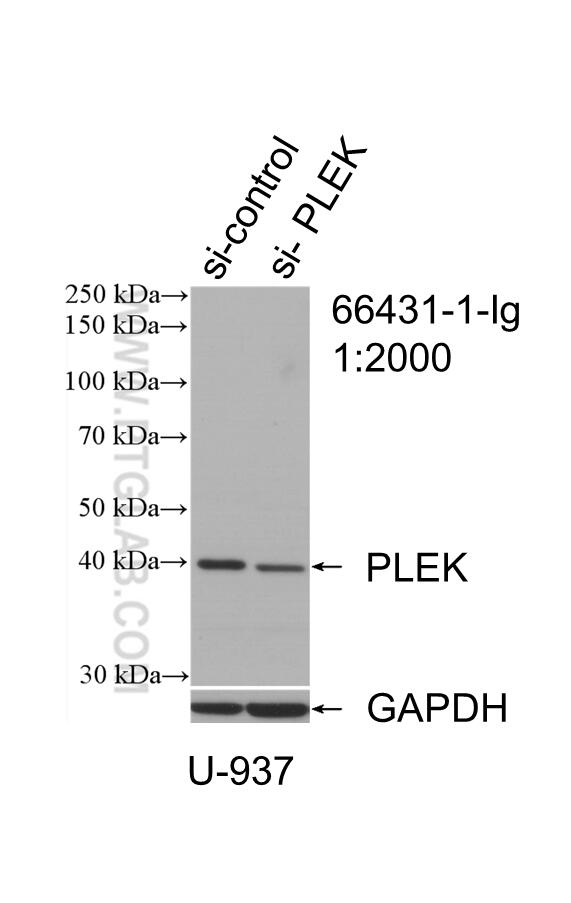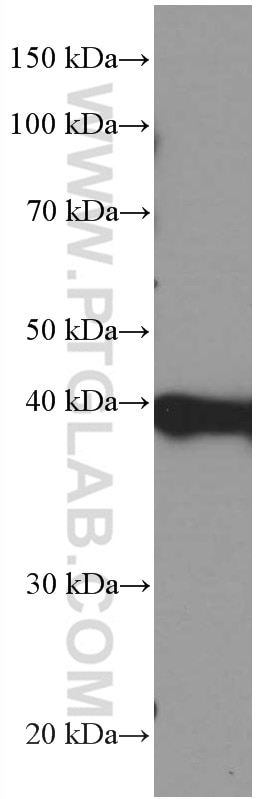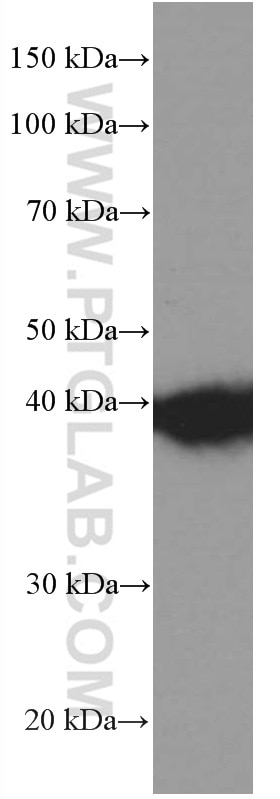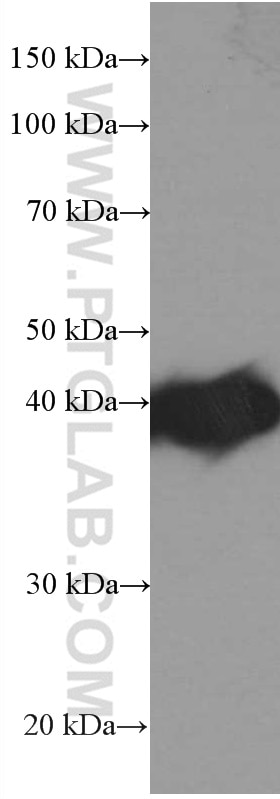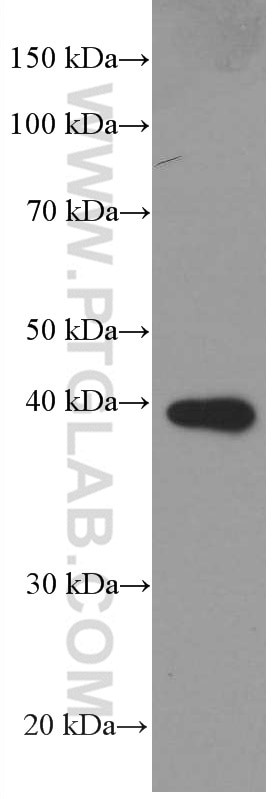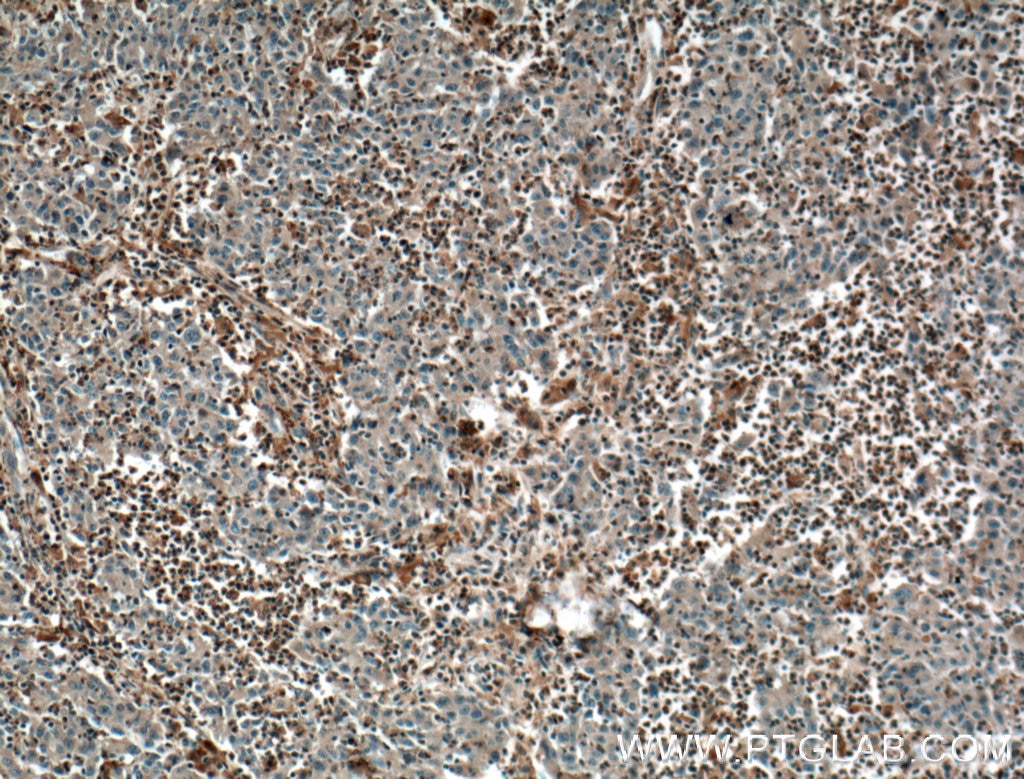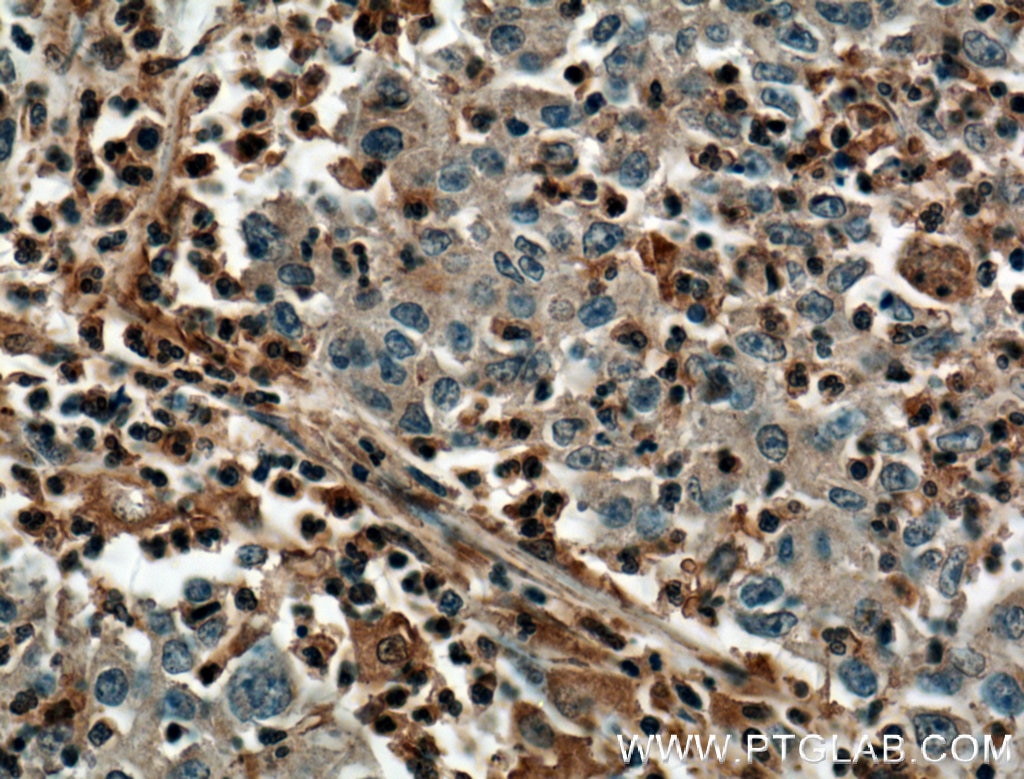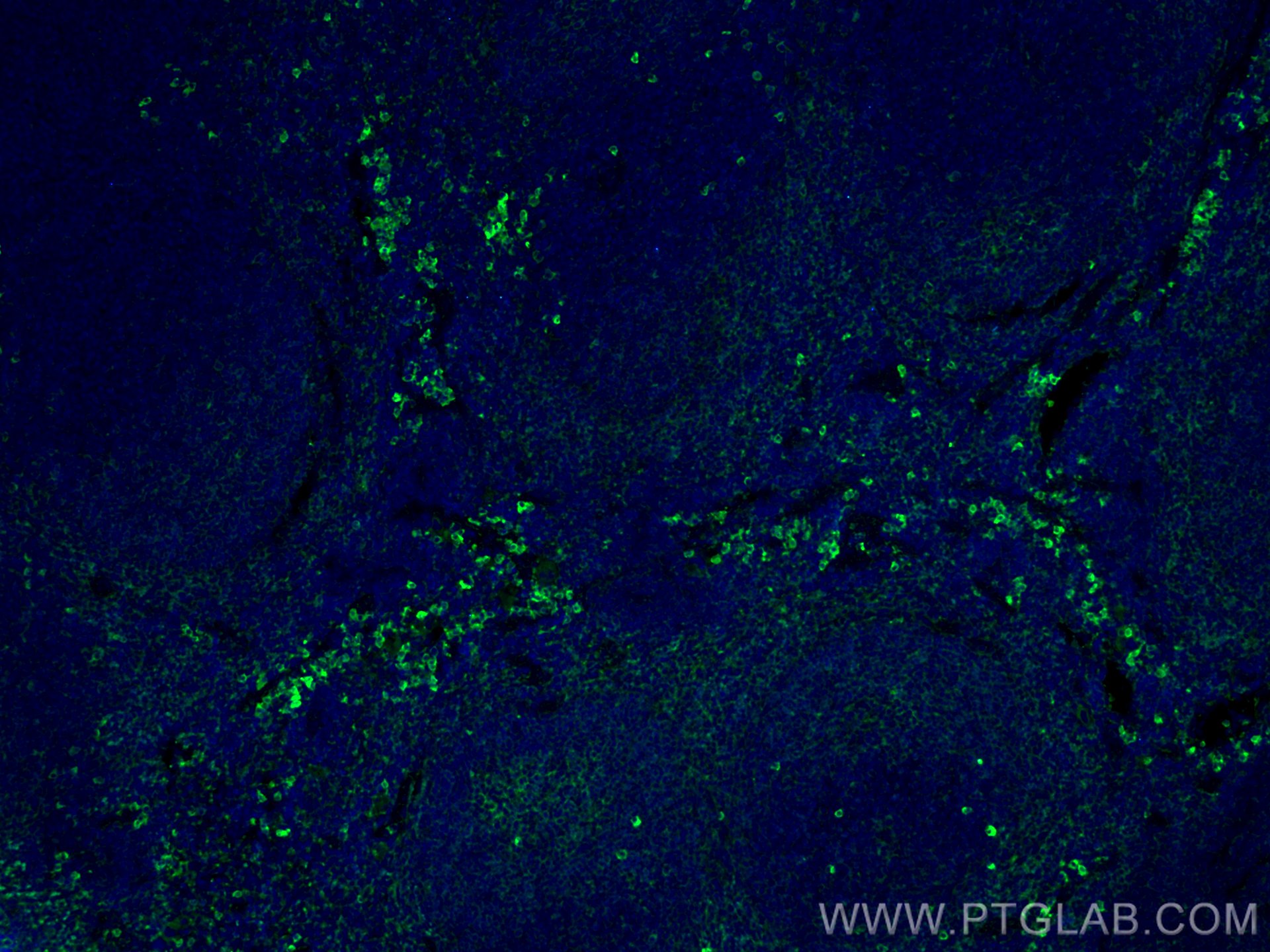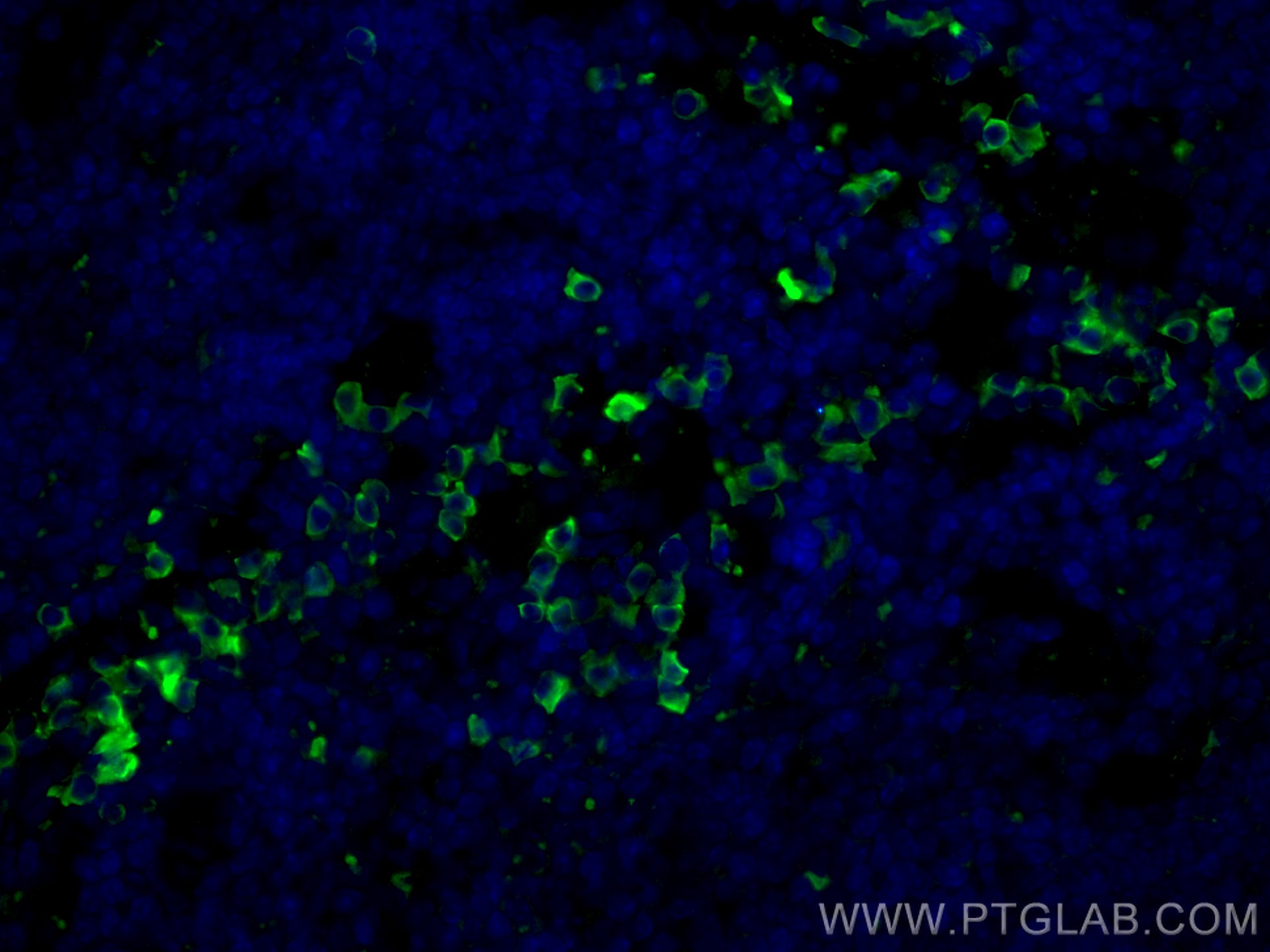- Phare
- Validé par KD/KO
Anticorps Monoclonal anti-PLEK
PLEK Monoclonal Antibody for WB, IHC, IF-P, ELISA
Hôte / Isotype
Mouse / IgG1
Réactivité testée
Humain, porc, souris
Applications
WB, IHC, IF-P, ELISA
Conjugaison
Non conjugué
CloneNo.
1D5C2
N° de cat : 66431-1-Ig
Synonymes
Galerie de données de validation
Applications testées
| Résultats positifs en WB | cellules HL-60, cellules THP-1, cellules U-937, tissu splénique de porc |
| Résultats positifs en IHC | tissu de cancer du côlon humain il est suggéré de démasquer l'antigène avec un tampon de TE buffer pH 9.0; (*) À défaut, 'le démasquage de l'antigène peut être 'effectué avec un tampon citrate pH 6,0. |
| Résultats positifs en IF-P | tissu splénique de souris, |
Dilution recommandée
| Application | Dilution |
|---|---|
| Western Blot (WB) | WB : 1:2000-1:20000 |
| Immunohistochimie (IHC) | IHC : 1:50-1:500 |
| Immunofluorescence (IF)-P | IF-P : 1:200-1:800 |
| It is recommended that this reagent should be titrated in each testing system to obtain optimal results. | |
| Sample-dependent, check data in validation data gallery | |
Applications publiées
| IHC | See 1 publications below |
| IF | See 1 publications below |
Informations sur le produit
66431-1-Ig cible PLEK dans les applications de WB, IHC, IF-P, ELISA et montre une réactivité avec des échantillons Humain, porc, souris
| Réactivité | Humain, porc, souris |
| Réactivité citée | Humain |
| Hôte / Isotype | Mouse / IgG1 |
| Clonalité | Monoclonal |
| Type | Anticorps |
| Immunogène | PLEK Protéine recombinante Ag3187 |
| Nom complet | pleckstrin |
| Masse moléculaire calculée | 350 aa, 40 kDa |
| Poids moléculaire observé | 40-47 kDa |
| Numéro d’acquisition GenBank | BC018549 |
| Symbole du gène | PLEK |
| Identification du gène (NCBI) | 5341 |
| Conjugaison | Non conjugué |
| Forme | Liquide |
| Méthode de purification | Purification par protéine G |
| Tampon de stockage | PBS with 0.02% sodium azide and 50% glycerol |
| Conditions de stockage | Stocker à -20°C. Stable pendant un an après l'expédition. L'aliquotage n'est pas nécessaire pour le stockage à -20oC Les 20ul contiennent 0,1% de BSA. |
Informations générales
PLEK (pleckstrin; also known as p47) was originally identified as the major PKC substrate in platelets and later is found to be expressed in all cells of the hemopoietic system. Through two pleckstrin homology (PH) domains at its N and C termini, PLEK may interact with various protein and/or lipid ligands and serve as an intracellular adaptor/targeting protein. Predominantly cytosolic in unstimulated cells, PLEK would undergo transient redistribution to phagosomal membrane in response to stimuli. PLEK has been found to be hyperphosphorylated in diabetic mononuclear phagocytes and promote proinflammatory cytokine secretion in diabetes. (10477609, 17579087)
Protocole
| Product Specific Protocols | |
|---|---|
| WB protocol for PLEK antibody 66431-1-Ig | Download protocol |
| IHC protocol for PLEK antibody 66431-1-Ig | Download protocol |
| IF protocol for PLEK antibody 66431-1-Ig | Download protocol |
| Standard Protocols | |
|---|---|
| Click here to view our Standard Protocols |
